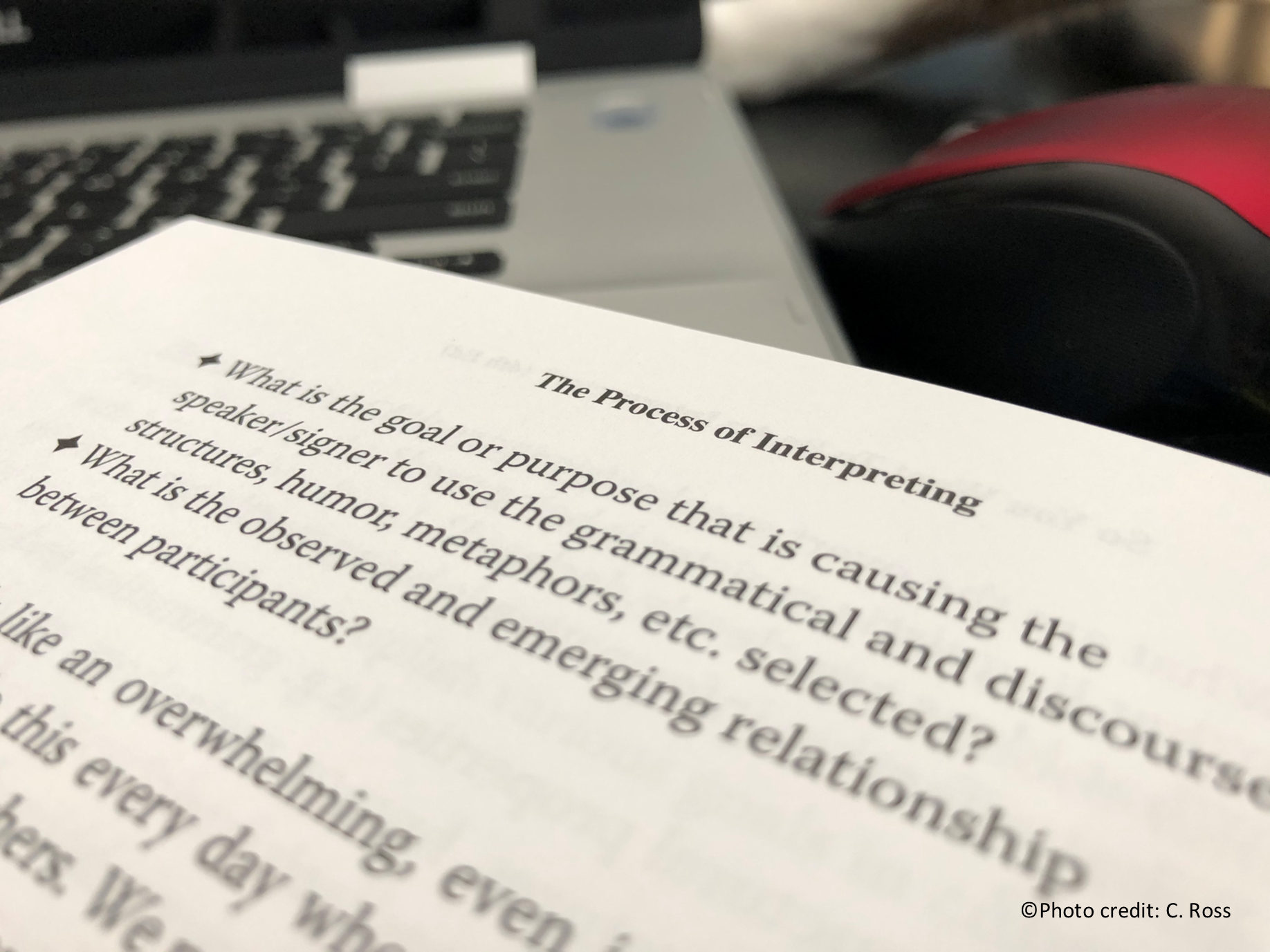
Articles
Welcome!
Check out our academic resources
Chopping Down and Reconstructing a Tree | Janice H. Humphrey
Auditory-aural and visual-gestural languages are perceived through difference sensory mechanisms, yet both are languages and in both the process of interpretation is similar. Conveying meaning across languages means going beyond the form; it also means incorporating the affect of a source language utterance in the target language in effective and culturally appropriate ways.
Portfolios: One Answer to the Challenge of the Assessment and the “Readiness to Work” Gap | Janice H. Humphrey
Janice Humphrey details the use of graduation portfolios, a valuable assessment tool used by the faculty to determine a student's level of competency. These imaginative techniques in Innovative Practices promise gains in sign language interpreting that will benefit teachers, students, and clients alike.
The Impact of Translation on Constructed Action and Constructed Dialogue in ASL Texts | Beth Cook
Depiction, a phenomenon similar to iconicity, involves representing what something “looks like or is like” (Streeck 2008:289). Because depiction is used more heavily in sign languages than spoken languages (Dudis 2007), people interpreting or translating spoken/written texts into signed languages struggle to use depiction naturally (Thumann 2011). This thesis analyzes constructed action (CA) and constructed dialogue (CD), two types of depiction in which the signer’s hands represent those of a discourse participant. Using Tannen (1989) & Metzger’s (1995) framework of non-directly-quoted CACD and Quinto-Pozos & Mehta’s (2010) degrees of CA, I examine differences between narratives originally composed in ASL and narrative segments from Genesis and Exodus that have been translated into ASL, all of which were signed by Deaf users of ASL. This analysis indicates that translated texts are slower and use less nondirectly-quoted CD than non-translated texts. Measuring depiction can improve the naturalness of these and other translations.
Link to videos: "The Impact Of Translation On Constructed Action and Constructed Dialog" by Beth Gray (und.edu)
The Iconicity and Non-arbitrariness of Body Locations in Four Unrelated Sign Languages | John Samson
Abstract
In this thesis, I show that universally, there is a strong tendency for signs located on the body to have an iconic or non-arbitrary motivation, especially in their original form. I analyze sign language dictionaries from four unrelated sign languages and establish an iconic or non-arbitrary link between the form of the signs and their meaning, and classify those links according to 8 categories of body location iconicity and 3 categories of non-arbitrariness. The strength of this tendency depends on the percentage of signs that are shown to have an iconic or non-arbitrary link. For the data analyzed here this percentage is between 92.0-98.1%. In addition to this I provide helpful principles for analyzing the iconicity and etymology of signs; I provide a framework for analyzing iconicity and make a new distinction between it and a type of non-arbitrariness which I am calling “form to form resemblance.”



